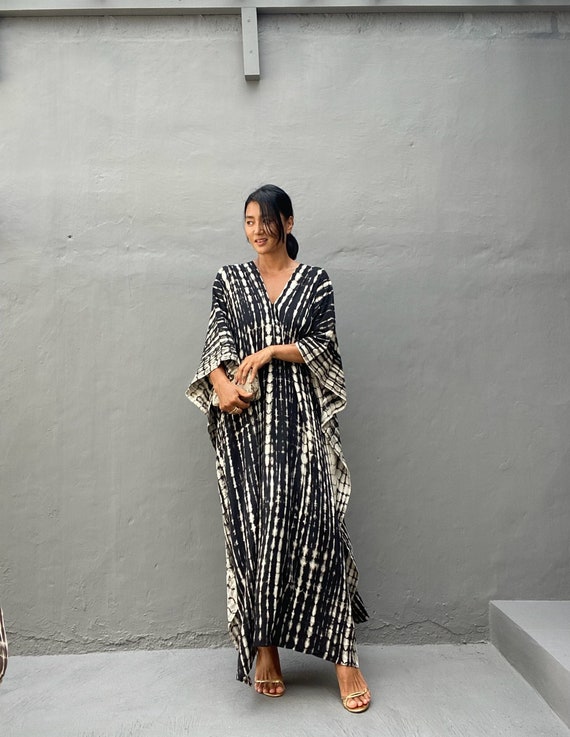
The Short History Of Kaftans
A symbol of bohemian and exoticism Over time “kaftan” has become the all-purpose term in fashion for any loose-fitting robe or tunic–often used to describe the various kinds of clothing from Middle Eastern and North African origin (the djellaba, abaya and burnouse for instance). A true kaftan is a narrow cut, long robe that has full sleeves, with either an open neck or completely exposed to the earth and often buttoned. The enormous robe without clearly defined sleeves which is usually referred to as the kaftan actually is more similar to the abaya.
Kaftan is a Persian word, while the fashion of wearing it is believed to have been developed in Ancient Mesopotamia.
The Ottoman Sultans of the 14th to the 18th century wore extravagantly decorated kaftans; they were also awarded as gifts to important generals and dignitaries. Kaftans can be made from nearly any material, but the majority are made of silk, wool, or cotton and are typically adorned by a sash. Kaftans have been worn by both men and women in variations through from the Iranian plateau, throughout North Africa, and into West Africa. In hot climates, the kaftan is typically worn, the kaftan’s loose silhouette aids in proper air circulation, thus lowering the body temperature (though Russians have a similar style of clothing called a Kaftan comprised of fur).
For a long time in Europe and North America, authentic kaftans were worn only by a select group of travelers and eccentrics, who brought them home from their travels abroad as part of the trend in Orientalism and Turkish style interiors in the 19th century. It was not until the 1950s and early 1960s that this style of dress began appearing in high fashion when it was adapted by French couturiers–including Christian Dior and Balenciaga–as a new form of loose-fitting evening gown or a robe over matching trousers. In 1966, Vogue described the kaftan as a necessary garment to wear by every member of the jet-set and photographed “the beautiful people” in an array of imported traditional styles and western variations “Here are the top fashionable styles that have ever been invented the elegance of seraglio is abounds in them; the slumber and relaxation emanate from them. The classic robes of Near East, they’re now everywhere on the contemporary map–inspiration of great dressmakers and every woman’s discovering beauty …”
- The kaftan’s silhouette was well-suited to the styles of the next decade, it was a simple design that could be embellished and heavily patterned, or sleek and minimal (as as seen in the fashions of Halston from the late 1970s). Women who were entertaining at home wore it as a “kaftan dress,” while in the same time, more traditional designs were being introduced into the United States and Europe by young people who had travelled the newly-established “Hippie trail” from North Africa to Afghanistan. The popularity within America of the kaftan–from expensive to mass market and cheap imports–stemmed from its connection with exoticism along with the effortless comfort of these pieces. From the mid-1970s through to the past decade, the Kaftan vanished from the majority of catwalks of high fashion, instead becoming popular with casual wear.
- The length was reduced to a micro-mini size, Tom Ford took the kaftan silhouette into the realm of the sexually edgy during Gucci Spring 1996. Fashion designers looking to bring their collections alive with distinct “oriental” touch and nostalgia for the 1960s rediscovered the many possibilities of this dress. Fashion designers like Temperley and Matthew Williamson have continually reanimated the Kaftan’s Bohemian glamour, while others such as Naeem Khan as well as Elie Saab have brought the kaftan into the red carpet in elaborately embossed and beaded versions. The graphic and bold silhouette of the kaftan gives designers the opportunity to create their own unique style on it, all the while usually maintaining the ease of comfortable and modesty that makes it so popular with women all over the world.

